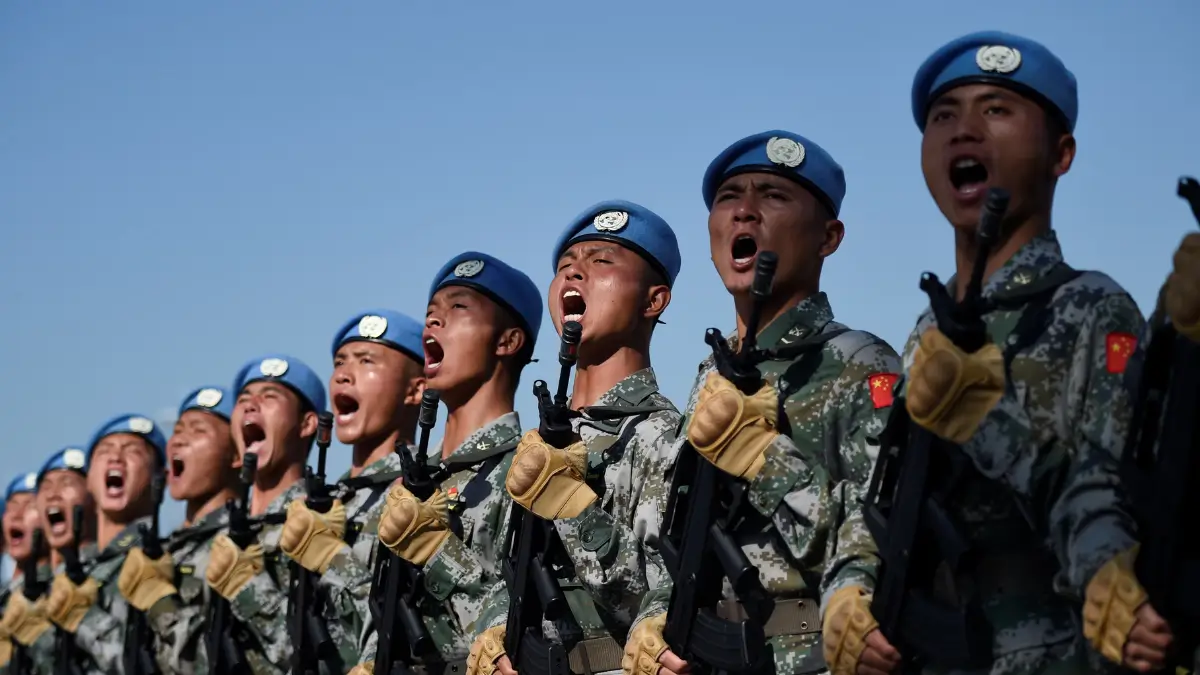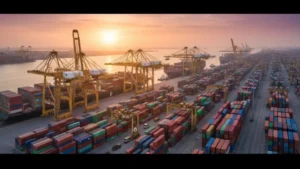China has announced a 7.2% increase in its defence budget for 2025, continuing its efforts to modernize and expand its military capabilities. The budget, which amounts to approximately $245 billion, was revealed at the National People’s Congress (NPC), the annual legislative meeting of the country. With this move, China aims to reinforce its territorial claims, enhance military technologies, and counter the United States’ military presence in Asia.
Despite being the second-largest defence spender globally, after the U.S., many analysts believe China’s actual military expenditure could be 40% higher than the official figure due to unaccounted expenses in other budgetary sectors.
China’s Defence Budget Growth and Economic Context
The 7.2% growth in military spending remains the same as last year, indicating a slowdown compared to past double-digit increases. This reflects China’s broader economic deceleration, as the government has set a GDP growth target of 5% for 2025. The increase in defence spending aligns with China’s strategy to prioritize military advancements despite economic challenges.
Strategic Military Expansion and Technological Advancements
China’s increased defence budget is primarily aimed at bolstering its military technology and hardware, including:
- Stealth fighter jets with improved radar evasion capabilities.
- Expansion of its aircraft carrier fleet (currently three, with a fourth under construction).
- A significant buildup of its nuclear arsenal, enhancing strategic deterrence.
- Modernization of the People’s Liberation Army (PLA), particularly in naval and air combat capabilities.
These advancements are viewed as efforts to challenge U.S. military dominance in Asia and assert China’s presence in contested regions such as the South China Sea and Taiwan Strait.
The People’s Liberation Army and South China Sea Tensions
The People’s Liberation Army (PLA), under the control of the ruling Chinese Communist Party (CCP), has been actively asserting its claims over disputed territories. One of the most contentious regions remains the South China Sea, where China has constructed military bases on artificial islands. These bases serve as strategic points for power projection and surveillance over vital international shipping lanes.
China’s Focus on Taiwan: Military Pressure and Diplomatic Statements
A key aspect of China’s military strategy is its assertion over Taiwan, which Beijing considers a breakaway province that must eventually be reunited with the mainland, by force if necessary.
Following the budget announcement, Premier Li Qiang reiterated China’s stance, stating that while Beijing prefers a peaceful resolution, it firmly opposes Taiwan’s independence and any external support for it. He emphasized the government’s commitment to “reunification and national rejuvenation.”
China has intensified its military operations near Taiwan, frequently deploying aircraft and naval vessels close to the island. On March 5, 2025, China sent a contingent of five aircraft and seven warships near Taiwan’s waters, just days after conducting larger-scale military exercises. This tactic, known as “gray-zone warfare,” aims to exhaust Taiwan’s military resources and demoralize its defense forces.
In response, Taiwan’s Defence Ministry announced plans to increase military spending, citing the “rapidly changing international situation” and “escalating threats from adversaries.” The U.S. has also continued to upgrade Taiwan’s military capabilities, providing advanced F-16 fighter jets, missile systems, and tanks to bolster the island’s defense.
Xi Jinping’s Military Reforms and Leadership Shakeups
Under President Xi Jinping, the PLA has undergone extensive structural reforms aimed at strengthening its combat readiness and eliminating corruption. In recent years, Xi has removed several senior military leaders, including two former Defence Ministers and the head of the missile corps, signaling a shake-up in military leadership.
While these changes are aimed at modernizing the armed forces, they also raise questions about internal instability within the PLA. Despite leadership purges, China’s military influence continues to expand, raising concerns among its regional rivals and Western powers.
China’s Criticism of U.S. Military Spending
Despite its significant military buildup, China continues to position itself as a defensive power, asserting that its military growth does not equate to expansionist ambitions. Following the budget announcement, Xinhua News Agency, China’s state-run media, criticized the U.S. for its massive military spending, noting that China’s defence budget has remained below 1.5% of GDP for over a decade.
A report from the U.S. Defense Department in 2024 warned about China’s growing military ambitions, emphasizing that the PLA is expanding its capabilities to operate far beyond China’s borders. The Pentagon highlighted China’s naval shift from offshore defense to open-sea operations, as well as its air force’s transformation into a strategic force.
Summary Table
| Category | Details |
|---|---|
| Why in News? | China has announced a 7.2% increase in its defence budget for 2025, amounting to approximately $245 billion, at the National People’s Congress (NPC). |
| Defence Budget Growth | The 7.2% increase remains the same as last year, reflecting economic slowdown and aligning with China’s 5% GDP growth target for 2025. |
| Strategic Military Expansion | – Stealth fighter jets with radar evasion capabilities. – Expansion of aircraft carrier fleet (three currently, fourth under construction). – Nuclear arsenal buildup for strategic deterrence. – Modernization of the PLA, especially in naval and air combat. |
| South China Sea Tensions | China has built military bases on artificial islands, reinforcing control over disputed territories and vital shipping lanes. |
| Focus on Taiwan | – China considers Taiwan a breakaway province and aims for reunification. – Military exercises near Taiwan intensified; March 5, 2025, saw deployment of five aircraft and seven warships. – Taiwan and the U.S. have increased military spending in response. |
| Xi Jinping’s Military Reforms | Extensive PLA structural reforms to strengthen combat readiness and eliminate corruption. Multiple senior military leaders removed, raising questions about internal stability. |
| China’s Criticism of U.S. | China positions itself as a defensive power, criticizing U.S. military spending while expanding its own military presence. |
| Geopolitical Impact | China’s defence budget increase escalates regional tensions, particularly with Taiwan, Japan, and the U.S.. |



 Operation Hawkeye: US and Jordan Strike ...
Operation Hawkeye: US and Jordan Strike ...
 India and the Netherlands Set Up Joint T...
India and the Netherlands Set Up Joint T...
 Brazil Hands Over BRICS Presidency to In...
Brazil Hands Over BRICS Presidency to In...







